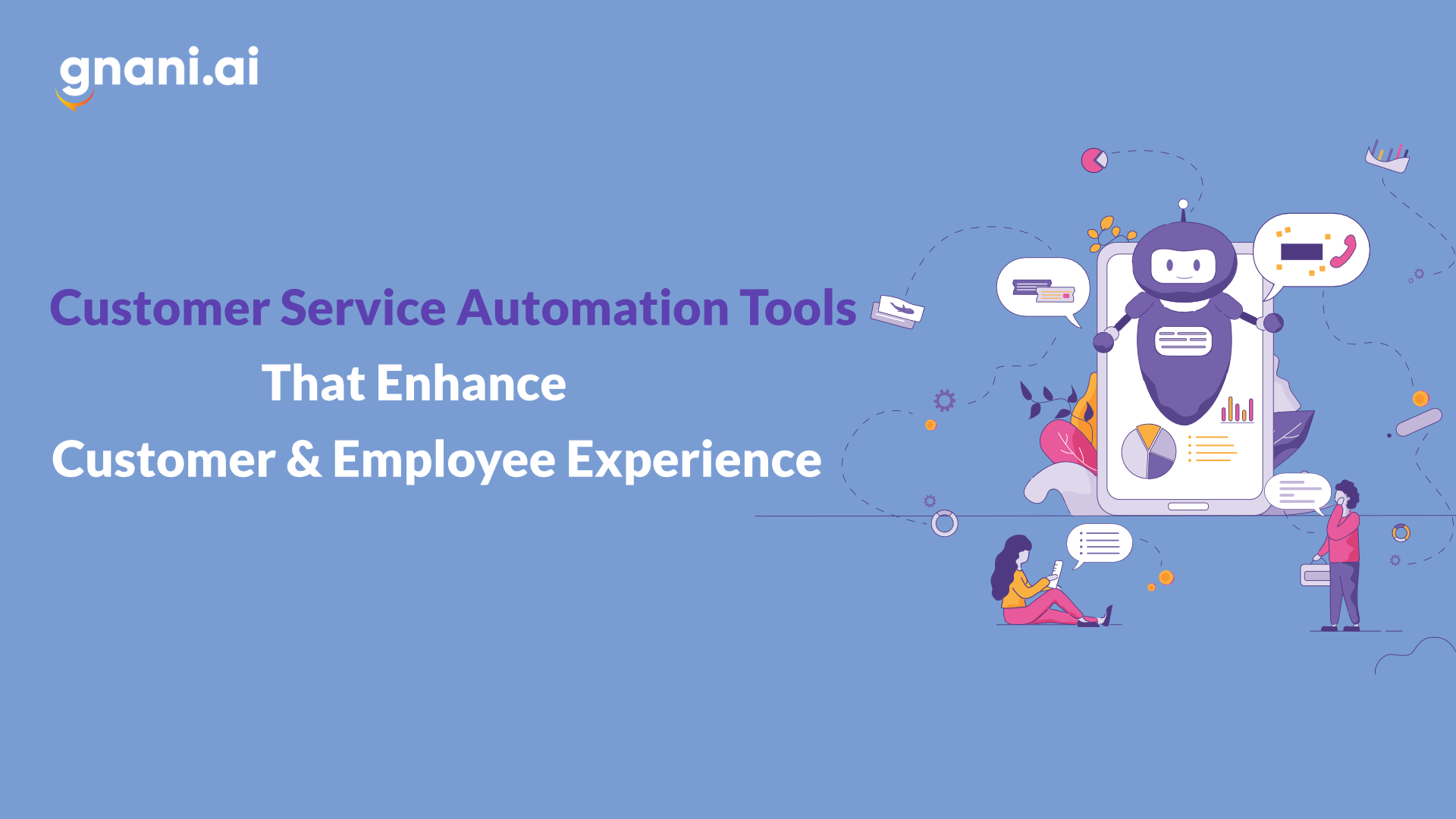Automation has stopped being a scary word as emerging technologies improve efficiency and create new roles where people make more satisfying contributions. It is the answer to the long-persistent problems of keeping customers engaged and happy. Many customer service automation tools can enhance customer experience, promoting retention and brand loyalty.
Fast and efficient – the two qualities that every customer wants to see in contact center strategy. According to American Express, slow service, long waiting times, multiple hand-offs, etc., are the markers of poor service that each customer tells 15 other people about. Fortunately, rapid digitization and technological advances are enabling seamless customer experiences.
Automating mundane functions of the contact center slashes operational costs while increasing revenues due to higher capacity for handling tickets. This post looks at the various tools that augment your customer service strategy and consumer experience.
Must-Have Automated Customer Service Experience Solutions in 2022
CRM platform
Most companies have adopted customer relationship management platforms now, and there are numerous affordable options if you haven’t made the switch yet. A CRM is a software that helps streamline all the communications with customers and nurture relationships with them. It helps align sales and marketing functions. Communications include records of emails, calls, forms, meetings, quotes, etc.
CRM platforms diminish the thousands of spreadsheets and databases by offering one platform to organize all this information. Many platforms like Keap and Hubspot Help Desk and Ticketing Software provide additional functions like invoicing, prioritizing tickets, establishing resolution workflows, automatic tracking of customer actions, etc.
Customer lifecycle management is an essential function where specific metrics are assigned to each customer journey stage to track through the business cycle. From discovering the product to retaining and bringing back the customer, CLM covers it all and balances the different departmental KPIs.
This software generally integrates closely with CRM software and, in some cases, is offered as a product suite. Customer lifecycle management software helps manage omnichannel communications, build unique customer journey profiles, segment customers, post-sales interaction, and most vitally, it is a single-stop-information resource for agents. Salesforce Marketing Cloud is a popular option.
Contract Lifecycle Management
CLM has this second abbreviation that gets mildly confusing. A contract lifecycle refers to the stages of preparing and closing a contract. It’s a 9-stage process that begins with a request to sign the contract, followed by negotiations and discussions, signature, storage, and post-storage retrievals, to summarize.
Most B2B companies that close deals have them. A typical integration is e-signatures or digital signing. CLM software gives the convenience of reducing paper, the number of meetings to resolve clause clarifications, tons of emails, etc. A CLM software also automates regulatory compliance, besides the usual functions of standardizing contract development. Icertis, DocuSign, and SAP Ariba are some famous options.
Conversational AI Solutions
These refer to software enabling humans to communicate with virtual assistants like voicebots, chatbots, or voice recognition systems. The technology is based on artificial intelligence and uses machine learning and natural language processing. AI bots help contact centers and other departments scale up the volume of customer support interactions without stressing out human representatives.
Voicebots and chatbots can join various stages of the customer journey to reduce friction and improve the efficiency of conversions. You get FAQ bots, payment reminder bots, ticketing bots, feedback, and survey bots to eliminate time wasted by humans on these repetitive tasks.
These virtual agents also get smarter over time as they learn with more data and training. The conversational AI agents come with analytics suites and omnichannel availability. They also integrate well with other platforms like CRM, messaging systems, etc.
Community Management Software
Community management is a new buzzword in marketing circles with the success of big brands like SAP & Salesforce and some notable examples in domains like health and fitness. Many companies have also used communities to solve challenging problems like Google’s Hackathons. Early mover companies are often able to build communities around their revolutionary products.
Communities can manifest as meetup groups, online forums, slack channels, or virtual HQs. If you think your product/brand can create its community, you should enter the space early enough to control the narrative.
Community management software life Vanilla helps build forums, blog platforms, Q&A interfaces, polls, and gamified features. You also customizable features, themes, and analytics tools to track community growth metrics. The customer support teams can easily navigate these forums to guide users and solve problems with expertise.
Almost 32% of businesses have already automated many customer service processes using AI. It allows customer service representatives to focus on more cognitively demanding tasks by delegating mindless, repetitive actions to virtual agents and programs. Automation also allows scheduled tasks to occur without relying on people’s memories.
Over time, these applications pay great dividends when they help you redirect resources towards demanding areas.



19 Jaw-Dropping Conversational AI Statistics That Make You Realize Why Successful Brands Use Them -
[…] to The State of Service Research report prepared by Salesforce, 77% of agents believe that automation tools will help them complete more complex tasks. Since most employees are working in different time […]